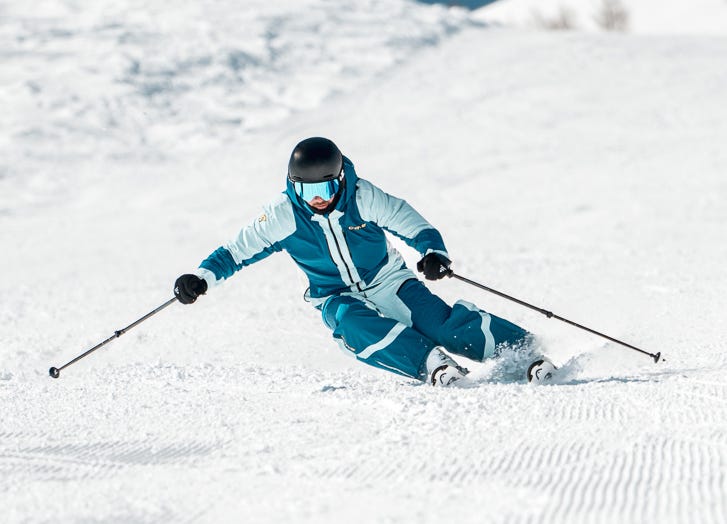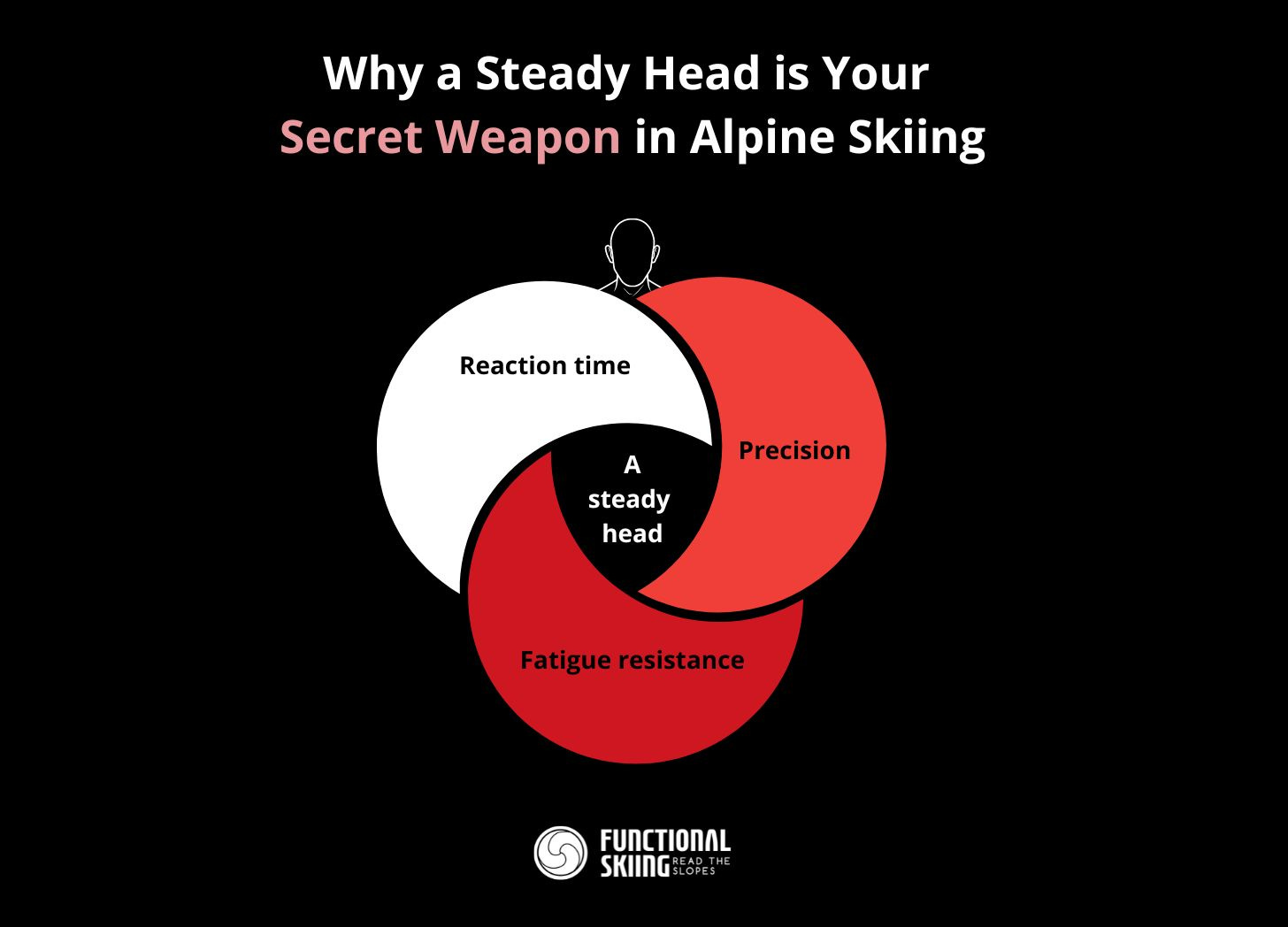Why Your Head Movement Is Sabotaging Your Ski Performance—and How to Fix It
A steady head is your secret weapon
Welcome back, fellow ski enthusiasts! After a brief summer hiatus, Functional Skiing is back, and I’m thrilled to kick off a new season of insights.
As winter approaches in the Northern Hemisphere, it's time to dive back into the technical side of skiing, and what better way to start than by exploring one of the most overlooked but critical aspects of high-performance skiing: maintaining a steady head.
As skiers, we are constantly chasing that perfect line, the seamless transition from turn to turn, and the thrill of speed under control. But what if I told you that a key factor to reaching this next level in your skiing isn’t in your feet or your hips, but in your head—quite literally. Maintaining a steady head while skiing is not just a basic tip, it's a scientifically-backed technique that can vastly improve your balance, control, and even your endurance on the slopes.
In high-performance skiing, where precision matters, every movement counts. A steady head plays a central role in aligning your balance systems—your visual focus and vestibular system. Let’s break it down.
A steady head makes your skiing smoother and more effective.
Balance Starts in Your Head
From a biomechanical perspective, your head is the control tower for your balance. It houses your vestibular system, which works hand-in-hand with your vision to give your brain crucial feedback about where you are in space. When your head is steady, your brain can process this feedback without interference, allowing you to respond to changes in terrain, slope angles, and turns with accuracy.
Think of it this way: every time your head moves erratically—looking down at your skis or side to side—you disrupt the balance signals sent from your inner ear and eyes. This causes your body to compensate, leading to micro-adjustments that can throw off your technique, slow down your reaction times, and make you more fatigued. Stability starts from your head, and a stable head makes for a stable skier.
The Hidden Cost of Unnecessary Movements
Every unnecessary movement on the slopes adds up. Tiny imbalances in head movement force your body to work harder than it needs to. When your head is constantly shifting, your body has to counteract those movements, burning up precious energy that could be used to maintain better control and endurance throughout a long run. This might not seem obvious at first, but ask any racer: energy efficiency is everything.
When we talk about endurance in skiing, most think of physical fitness and muscular strength, but we often overlook the mental and biomechanical strategies that can also improve stamina. Keeping your head steady helps your body stay in a more relaxed and natural alignment, reducing muscle tension and energy consumption. Over time, this can help you last longer on challenging terrains without feeling the burn too early in the day.
The Science Behind a Quiet Head
Let’s dive into the science: research on alpine skiing biomechanics has clearly shown that erratic head movements can disrupt both the vestibular and visual systems, which are crucial for maintaining balance and focus on the slopes. These disruptions often lead to misalignments in your posture and force you to make unnecessary corrections.
For further reading, I recommend checking out these two excellent resources:
Here’s a summary of the key insights:
When a skier keeps their gaze focused ahead instead of looking down at their skis, it reduces the likelihood of overcompensating for balance disruptions. This allows for smoother, more fluid turns, making your skiing more controlled and efficient.
This applies across all skiing scenarios, whether you’re racing through gates or gliding down groomed trails. Even small, unnecessary head movements can disturb the alignment between your upper and lower body, wasting energy on correcting these imbalances.
In elite disciplines like slalom, skiers are trained to minimize head movement, focusing on the course ahead and letting the body naturally follow.
Ultimately, a quiet head leads to a more balanced skier.
How to Train for a Steadier Head
The great thing about head positioning is that you can train it like any other skill. Next time you hit the slopes, make it your goal to maintain a steady gaze farther down the hill, rather than checking in on your skis. Some coaches even recommend simple drills where you ski with limited visual feedback—like taping the lower part of your goggles—to help develop this discipline.
For more advanced training, video analysis can be a powerful tool. Watching footage of yourself skiing can reveal just how much your head moves during a run. You might be surprised to see the difference between how much you think your head is moving and how much it actually is. Correcting this often subconscious habit is key to building a strong foundation for better skiing.
Conclusion: A Small Change with Big Results
The role of a steady head in skiing is a prime example of how small, often overlooked elements can lead to big improvements. By minimizing unnecessary head movement, you’re not only making yourself more balanced and agile, but you’re also conserving energy and prolonging your endurance. Whether you're an instructor looking to refine your skills or a skier aiming to improve performance on demanding runs, mastering this aspect will elevate your skiing to a new level.
In the world of alpine skiing, where precision and balance are everything, keeping a quiet head is more than just good advice—it’s a game changer.
If you enjoyed this article, feel free to share it with others who might benefit from it!
💪 Support This Newsletter
Are you loving the expert skiing tips and insights from Functional Skiing? Now you can show your support in style with our brand-new Functional Skiing T-Shirts!
Crafted from 100% cotton, these unisex classic tees are perfect for unwinding after a day on the slopes. Designed with a structured fit and sharp lines, they bring trendy vibes to your après-ski wardrobe and layer perfectly with streetwear.
Available in a range of vibrant colors, including Black, Pink (Azalea), Purple, Blue (Royal), Green (Irish Green), and Orange—there’s a look for every skier!
Get yours now and wear your passion for skiing—and this newsletter—proudly!








Thank you for the piece. Looking forward to the next season. Just a little remark, my stability is definitely in my head, in the metaphoricak sense more than the literal one.